Delamaine Lodge
Houses within 10km of this house
Displaying 28 houses.
Houses within 10km of Delamaine Lodge
Displaying 28 houses.
| House name | Description | |
|---|---|---|
| Raheen | Raheen is associated with both the Kilkelly and O'Hara families. In the 1770s it seems to have been a residence of the Taylor family, with whom the O'Haras intermarried. In the 1830s the OS Name Books record it as "a neat house, in form like a cottage two stories high." Raheen House was badly damaged by fire in the latter part of the twentieth century. The entrance gateway is still extant. |

|
| Coole | Coole House was built in the late 18th century for Robert Gregory. It was demolished in 1941 but the gardens and some of the parkland are still extant and maintained by the Forestry and Wildlife Service. Part of the farm buildings now houses an interpretive centre and tea rooms. See www.coolepark.ie |

|
| Normangrove | In the 1850s the house at Normangrove, in the Kinvara area, was being leased by John O'Hara to Charles Higgins. In 1814 it had been recorded as the residence of John Burke and was also listed as a Burke house by Lewis in 1837. In 1906 Miss M.L. Forster held over 500 acres of untenanted land here as well as buildings valued at almost £3. The Forsters had held land at Normangrove at the time of Griffith's Valuation but no buildings. O'Connell states that the house was occupied until about 1914 and it fell into ruin therafter. The entrance and driveway lead to a farmyard and there is no trace of the house now. | |
| Doorus House | Dooras House was built by the French family in the 18th century. At the time of Griffith's Valuation Count de Basterot was leasing this property from Henry Comerford. In 1906 Count de Basterot was the owner of a mansion house valued at £10 here. O'Connell records that the house was demolished about 1917-18. | |
| Newtown Lynch | O'Connell states that Newtown was built around 1795. At the time of Griffith's Valuation the townland of Doorus Park was part of the estate of Patrick Lynch of Renmore. John W. Lynch is recorded as the owner of this mansion house, valued at £13, in 1906. On the Ordnance Survey maps it is labelled Newtown House. It has been in ruins since the 1930s. |

|
| Northampton | The townland of Poulnaveigh otherwise Northampton, containing Northampton House, "of modern construction", was offered for sale in the Encumbered estates court in June, 1865. In 1894 Slater refers to Northampton as the residence of Captain Harry de Vere Pery a son of the second Earl of Limerick. In 1906 it was the property of James Brady-Murray and was valued at £31. Northampton House is no longer extant having been demolished in the 1930s. http://www.northamptonns.com/index.php/eng/content/view/full/131 |

|
| Seapark House | This property is described as a caretaker's house on Christopher St. George's estate at the time of Griffith's Valuation when it was valued at £8. O'Connell states that it was locally known as "Foy's House" and was used as a fever hospital during the famine. It is now in ruins. |
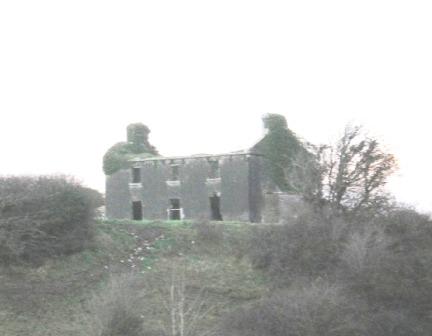
|
| Hermitage or Neptune | O'Connell states that this house was originally built by Dr. Nicholas Archdeacon, probably about 1805-6. It was later the property of the Blake family and in 1862 the house was known as Hermitage House and was the residence of Francis Blake Forster. It has been in ruins since the mid-20th century. |
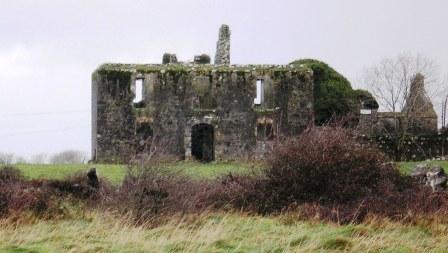
|
| Ballynamanagh | At the time of Griffith's Valuation, Thomas Redington was leasing a house valued at £4 at Ballynamanagh, barony of Dunkellin, to John Caven. It was accompanied by almost 100 acres. Kelly noted that it had been the property of Mr.Burke of Carheen for over 100 years but was later in the possession of the Redington estate. This house is still extant and occupied. |
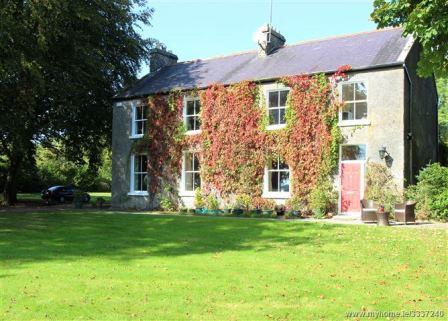
|
| Tyrone | Tyrone was built in the early 19th century. It is described in the OS Name Books as "a beautiful residence" in the 1830s. At the time of Griffith's Valuation, it was in the possession of Christopher St.George and was valued at £50. In 1894 Slater notes it as the seat of Robert J.K. St.George. The family ceased to live there in the early twentieth century. Its ruins can be seen overlooking the estuary of the Clarin river. |

|
| Kilcolgan Castle | Christopher St. George, residing at Kilcolgan Castle, is described as a resident proprietor in county Galway in 1824. In the 1830s Kilcolgan Castle is described as the property of A.F. St. George. This house, part of the St.George estate, was leased by Matthew St.George from Christopher St.George, 1855. At that time Matthew St. George was acting as agent for the Rathbourne estate. Earlier, the Ordnance Survey Field Name books record that he was acting as agent for the estate of Patrick French in the nearby parish of Ballynacourty. In 1894 Slater refers to "Kilcolgan House" as the residence of James St. George. |

|
| Newtown Kilcolgan | Arthur St.George was leasing a house, valued at £8, at Newtown Kilcolgan, from Christopher St.George in 1855. Evidence of estate buildings still survive in this area though the house appears to be gone. | |
| Cloghballymore | Originally a tower house owned by the Kilkelly family, Cloghballymore House, was extended a number of times by the various families who held the estate over three centuries.. The National Inventory of Architectural Heritage indicates that the main house at the site was constructed by Marcus Lynch in the eighteenth century. In 1906 it was owned by Llewellyn Blake and was valued at £18. It was later given by him to a missionary order and maintained for some time as a seminary. The building is still extant and now used as St. Columba's nursing home. |
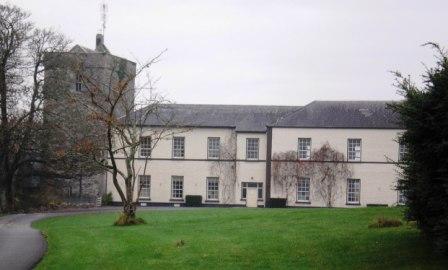
|
| Ballyclery | The house at Ballyclery is described as a caretaker's house for the St.George estate. It was valued at £8 in 1855. An occupied house still exists at this site but may have been modernised. | |
| Stradbally | Griffith's Valuation shows that Christopher St.George had what are described as "offices" valued at £16 in the townland of Stradbally West, parish of Stradbally, barony of Dunkellin. This was the stable complex for Tyrone House and adjacent to the walled garden which was part of the estate. |

|
| Roo | The original Roo House was a single story L-shaped building. Only a small portion, which has been incorporated into farm buildings, now remains. Tradition indicates that it was leased by Bishop Nicholas Archdeacon sometime in the early 19th century. In the 1830s it was the residence of a Mr. Sellers. The house and over 100 acres was leased by the Curtin family from the Gregory estate in the 1840s but the Gregorys were later obliged to sell this part of the estate. A two-story house, now derelict, was erected on the site in the early 20th century. The property is still held by the Curtin family. |

|
| Rineen | The property at Rineen was leased to Daniel O'Dea by Henry Comerford at the time of Griffith's Valuation. It was valued at £26 and included a mill. The National Inventory of Architectural Heritage suggests it was built c.1804 by Count de Basterot. It is now a ruin. |
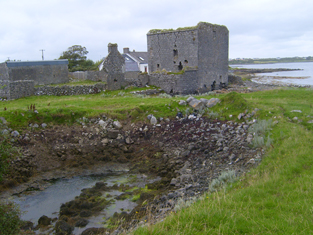
|
| Seamount | Seamount House was built by the Butlers of Cregg in the 18th century. O'Connell notes that Seamount was the residence of Maj. Theobald Butler, who had fought at the Battle of Waterloo, during the 1820s. At the time of Griffith's Valuation Denis Hynes was leasing from Edmund Donnellan, when it was valued at £16. Dr. Hynes had purchased the house from the Butler estate. In the early 20th century it was given to the Sisters of Mercy and is now a school. |

|
| Thornville Lodge | O'Connell states that this house was built by the Bricknell or Bucknell family in the later 18th century. It was later occupied by the Bishop of Kilmacduagh, Dr. Ffrench. Kinvara parish records also indicate that Arthur and Clare Ireland lived here in the 1830s. This may be the same Arthur Ireland who held the post of Burser at Queen's College, Galway in the 1850s. The house is still extant. | |
| Neptune Vale | O'Connell states that Neptune Vale was the original de Basterot house in the Kinvara area, probably built in the late 18th century. The house was demolished sometime in the mid-19th century although at the time of Griffith's Valuation, it was still owned by Count de Basterot and valued at £4. One of the outbuildings was possibly subsequently converted into a dwelling house. | |
| Doorus Cottage | O'Connell states that Doorus Cottage was built by the de Basterot family in the 1860s, possibly with materials from the demolished Neptune Vale. It had several owners before being given to An Oige in 1961 as a youth hostel. |

|
| Lydacan Lodge | Lydacan Lodge is recorded in the OS Name Books as the residence of John O'Hara. On the 1st edition OS maps the house is recorded as Lydacan Lodge. At the time of Griffith's Valuation Lydacan is recorded as the property of James O'Hara where he held a herd's house and 200 acres. | |
| Maryville House | At the time of Griffith's Valuation, Arthur Alexander occupied Maryville House at Cahermore, barony of Kiltartan, when it was valued at £8. Maryville Police Barracks was located nearby. The original Maryville House has disappeared and the house on the site of the barracks is known as Maryville House. |
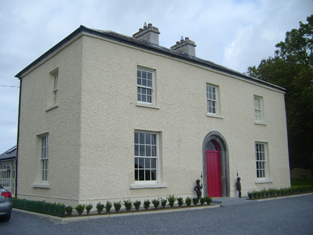
|
| Drumharsna | At the time of Griffith's Valuation, Lord Ashtown owned the townlands of Drumharsna North and South, barony of Dunkellin. A herd's house in Drumharsna South was valued at £2. By 1906 the buildings at this property were valued at £14. These buildings are no longer extant. | |
| Garryland | Garryland was an extensive wooded area, part of the Shawe-Taylor estate in the parish of Kilmacduagh, barony of Kiltartan. At the time of Griffith's Valuation and also in 1906 buildings to the value of £10, including a wood-ranger's house, were located here. These buildings are now in ruins but substantial areas of woodland remain and are now maintained by the Forestry and Wildlife Service. | |
| Harbourhill Lodge | Marked as Habourhill Lodge on the first Ordnance Survey map, this house was occupied by the Reverend Michael O'Fea at the time of Griffith's Valuation and held from John Bindon Scott. It later became a Constabulary barracks, now a ruin. | |
| Corranroo Lodge | Occupied by Burton Bindon in 1837 and by Samuel Bindon in the mid 19th century, who held the property from Colonel Henry White with 11 acres. Weir writes that it was the home of the Misses Lloyd in the early 20th century, one a painter and the other a sculptress. The house is no longer extant. | |
| Cartron | A 19th century house used as a summer residence by the Brady/Brady Browne family, now a ruin. |

